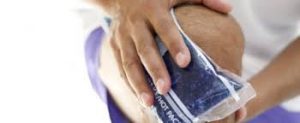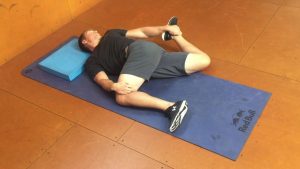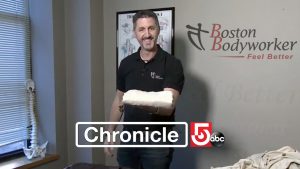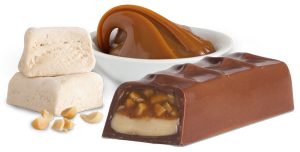An Alternative Approach to Stretching
Clinicians, athletes and rehabilitation specialists advocate stretching as a means for injury prevention and treatment. The primary purpose of any stretching technique is to enhance pliability and flexibility in the soft tissues. It is also routinely incorporated with massage in the treatment of pain and injury conditions. There are many different stretching techniques, which all fall into one of three primary categories: static, ballistic or active-assisted stretching.
Static stretching is the most common. In static stretching, you bring the target muscle into a lengthened position and hold it there until you have achieved the desired stretch. The ideal length of time to hold a static stretch is debated in the literature and the results appear inconclusive. Somewhere around 15 to 20 seconds is a common time frame that achieves good clinical results.
Ballistic stretching is used most commonly in the athletic environment. During a ballistic stretch, you bob or bounce into a stretch to encourage tissue elongation in the muscle. Ballistic stretching works by using the momentum of the moving limb to extend past the initial limitation of range of motion. Many people oppose the use of ballistic stretching because the rapid elongation of muscle tissue in the bouncing motion can activate the stretch reflex, which would be counterproductive to stretching.
In active-assisted stretching, the client actively engages a specific muscle contraction prior to, or during, the stretching procedure. There is a variety of active-assisted techniques and they go by different names such as PNF, muscle-energy technique, active isolated stretching or facilitated stretching. There are slight variations in each of these methods, but they are all based on the neurological principles of post-isometric relaxation (PIR) and reciprocal inhibition. Experiments that compare active-assisted methods with static or ballistic stretching show the greatest range of motion gains with active-assisted methods.
Immediately following an isometric contraction, there is an increased degree of relaxation in that same muscle. This immediate reduction in neurological activity is called the post-isometric relaxation (PIR). The methods of active-assisted stretching use the window of reduced neurological activity during the PIR to engage a stretch of the target muscle after it has isometrically contracted. Stretching during the PIR is more effective than stretching without the prior isometric contraction.
The other neurological principle that is of important in active-assisted stretching methods is reciprocal inhibition. When an agonist (target) muscle contracts, there is a neurological inhibition of its antagonist (opposite) muscle. The reduction in neurological activity in the antagonist muscle is called reciprocal inhibition. Because reciprocal inhibition decreases neurological activity in muscles opposite the ones being contracted, it is helpful to use during stretching procedures. Stretching of the target muscle is enhanced when its opposite muscle is contracted at the same time (Fig. 1).
The various techniques of active-assisted stretching advocate different lengths of time to hold the isometric contraction prior to stretch. Initial research has indicated that a relatively short period of nonmaximal isometric contraction (about 3 seconds) seems most effective for holding the contraction prior to stretch.1 These methods also vary in the length of time that the stretch is held. A study investigating active-assisted stretching compared stretch duration times of 3 seconds and 30 seconds and found no significant difference in the outcomes between the two time periods.2 More research is needed to determine the ideal stretching method(s). It may turn out that the optimum stretching method depends on the situation in which it is being used.
Effective Stretching Procedures
 Hamstring stretching with reciprocal inhibition. During this hamstring stretch the practitioner will engage the hip flexors concentrically by attempting to further flex the hip. Engaging the hip flexors causes reciprocal inhibition of the hamstring group (the target muscle to be stretched). Each of the stretching procedures mentioned above must take into account the biomechanical and neurological properties of the myofascial unit. Therefore, all stretching procedures engage two primary components: the physical stretch of muscle and connective tissue (mechanical effects) as well as the reduction in neurological resistance to stretch (neuromuscular effects).
Hamstring stretching with reciprocal inhibition. During this hamstring stretch the practitioner will engage the hip flexors concentrically by attempting to further flex the hip. Engaging the hip flexors causes reciprocal inhibition of the hamstring group (the target muscle to be stretched). Each of the stretching procedures mentioned above must take into account the biomechanical and neurological properties of the myofascial unit. Therefore, all stretching procedures engage two primary components: the physical stretch of muscle and connective tissue (mechanical effects) as well as the reduction in neurological resistance to stretch (neuromuscular effects).
Fascia is interwoven throughout muscles in an extensive network. It has viscous properties that respond better to slow, sustained tensile loads and resist rapid elongation.3 The process of connective tissue gradually lengthening when a sustained stretch is applied to it is called creep. The extensive fascial network running through all muscles suggests greater benefit for longer-duration stretching methods to take advantage of connective-tissue creep.
The neurological resistance to stretch is primarily governed by a specialized proprioceptor called the muscle spindle. It is responsive to both the rate of muscle stretching and the amount of stretch in the tissue. If the muscle is stretched too fast or too far, the muscle spindle sends signals to the central nervous system and an immediate muscle contraction is engaged to prevent overstretching. This immediate muscle contraction is called the myotatic (or stretch) reflex. Stretching procedures attempt to minimize any recruitment of the stretch reflex.
An Alternative Method
 Enhancing a hamstring stretch. The practitioner uses one hand to hold the limb in the stretched position and the other hand applies the fascial elongation technique to the target muscle group (hamstrings).
Enhancing a hamstring stretch. The practitioner uses one hand to hold the limb in the stretched position and the other hand applies the fascial elongation technique to the target muscle group (hamstrings).
(Photo courtesy of Bob McAtee) Manual-therapy practitioners have been excited by recent research studies enhancing our understanding of the physiological properties of fascia. We have recently learned that fascia contains contractile cells and is capable of releasing its contraction and further elongating when a prolonged tensile load is applied to it.4 Armed with this new understanding, we can use the physiological properties of fascia to enhance stretching procedures. Combining active-assisted stretching methods with fascial-elongation methods would address both the neuromuscular and connective-tissue components of the stretching process.
Consider hamstring stretching as an example of how this works. Engage the hamstrings in a short 3-second nonmaximal contraction. Release the contraction and bring the hamstrings into a stretched position (Fig. 2). Have the individual attempt to further stretch the hamstrings by attempting to flex the hip as far as possible (as they did in Fig. 1). This movement engages the reciprocal inhibition process and encourages further lengthening. While this position is held, apply a myofascial-stretch technique (with the hand or back side of the fist) to the hamstrings and hold it for about 30 to 60 seconds. Holding the myofascial stretch encourages relaxation of the fascial contractile cells and enhances connective tissue creep.
Both the neuromuscular and connective-tissue components of the stretch are emphasized by combining these myofascial and active-assisted stretching techniques. I have found this stretching method helpful with a number of chronically tight muscles. In the future, it will be valuable to perform comparative studies with this and other stretching techniques to find out which ones are most effective under various clinical circumstances.
References
- Sharman MJ, Cresswell AG, Riek S. Proprioceptive neuromuscular facilitation stretching: mechanisms and clinical implications. Sports Med 2006;36(11):929-39.
- Smith M, Fryer G. A comparison of two muscle energy techniques for increasing flexibility of the hamstring muscle group. J Bodyw Mov Ther Oct 2008;12(4):312-7.
- Taylor DC, Dalton JD, Jr., Seaber AV, Garrett WE, Jr. Viscoelastic properties of muscle-tendon units. The biomechanical effects of stretching. Am J Sports Med May-Jun 1990;18(3):300-9.
- Schleip R. Fascial plasticity: a new neurobiological explanation. J Bodyw Mov Ther 2003;7(1):11-9.
Ready to #feelbetter?
You're just a click away from a wicked good massage!
-

60 Minute Massage Gift Card
$170.00 Add to cart -

90 Minute Massage Gift Card
$255.00 Add to cart -

Mini Aer Small Room Air Purifier
$149.00 Add to cart -
Sale!

Thera-Pearl Sports Pack/Hot Cold
Original price was: $14.99.$12.99Current price is: $12.99. Add to cart -

3 Somadome Sessions Gift Card
$135.00 Add to cart -
Sale!

TheraBand® Stretch Strap
Original price was: $19.99.$14.99Current price is: $14.99. Add to cart -

20 Minute Somadome Gift Card
$45.00 Add to cart -

TheraBand CLX Connective Loop
$14.99 Select options
Please Hold the R.I.C.E.
Please Hold the R.I.C.E. I have been in the rehabilitation field since 1992. Since the very beginning I was always told that when treating an acute injury you should follow the age old acronym of R.I.C.E. or Rest, Ice, Compression and Elevation. The concept was originally introduced by one of the most respected names in…
Read MoreHave a Brettzel!
Have a Brettzel! In the world of flexibility and stretching, there are a bevy of stretches that have likely been shown to you over the years. It’s hard to remember them if you don’t consistently do them and the ones you likely DO recall are the ones that are probably easiest for YOU to perform.…
Read MoreTake 5: A Stress Break
Take 5: A Stress Break I will be the first in line to inform you of the benefits of a 60 minute massage treatment. However, what if your massage is not scheduled for another week or worse, not even scheduled? Well, as a firm believer and trumpeter of self-care, here is a pretty neat trick…
Read MoreIs it a Muscle Cramp or Muscle Strain?
Is it a Muscle Cramp or Muscle Strain? Last week when my daughter walked in from cheerleading practice, I noticed her limping. When I asked her why she was limping, she went on to explain what I often hear and have seen from my athletes. Having been fortunate to evade serious injuries until this point…
Read MoreWork From Home Hacks!
With so many of you experiencing a new work environment, you are probably starting to notice that many of the chronic aches and pains you had experienced in the past at work on a daily basis, have seemingly disappeared. In their place however, are a new set of sensations we are experiencing due to such…
Read MoreHow to Fold a Fitted Sheet
Have a ‘sheety’ Valentine’s Day! Today is Valentine’s Day, otherwise known to most as a #greetingcardholiday. As I walked out of CVS this morning, I laughed at the people who were fighting for position in the greeting card aisle. Valentine’s Day is about showing love for someone in your life, not elbowing strangers while cursing…
Read MoreHappiness is Contagious
Happiness is Contagious Maybe mom was right. Research suggests that surrounding yourself with friends and family who are happy can actually increase your own happiness. Scientists at Harvard University and the University of California, San Diego, found that emotions, particularly happiness, have a viral effect in how they spread from one person to another. For…
Read MoreDe-stressing the Commute
De-stressing the Commute Turning Road Rage into Road Sage The average American commuter spends an hour a day driving to and from work. During this stressful, stop-and-go time, it’s likely that blood pressure increases, adrenaline begins pumping, and muscles constrict and tighten. By the time you get home, you’re wiped out and grumpy, and you…
Read MoreWhat’s the Scoop on your Poop?
What’s the Scoop on your Poop? Being the father of two girls, I know I have my work cut out for me. I have come to accept that there are lessons that I can teach my children and there are others lessons they will simply have to learn through personal experience. One of the lessons…
Read MoreHalloween Hacked!
Halloween Hacked Check out these simple hacks! Who among us doesn’t love Halloween. If I am being honest, it used to be me! You see, I typically found myself in trouble around this time of year when I was in grammar school. Let’s just say that I wasn’t always motivated to do what was asked…
Read More








